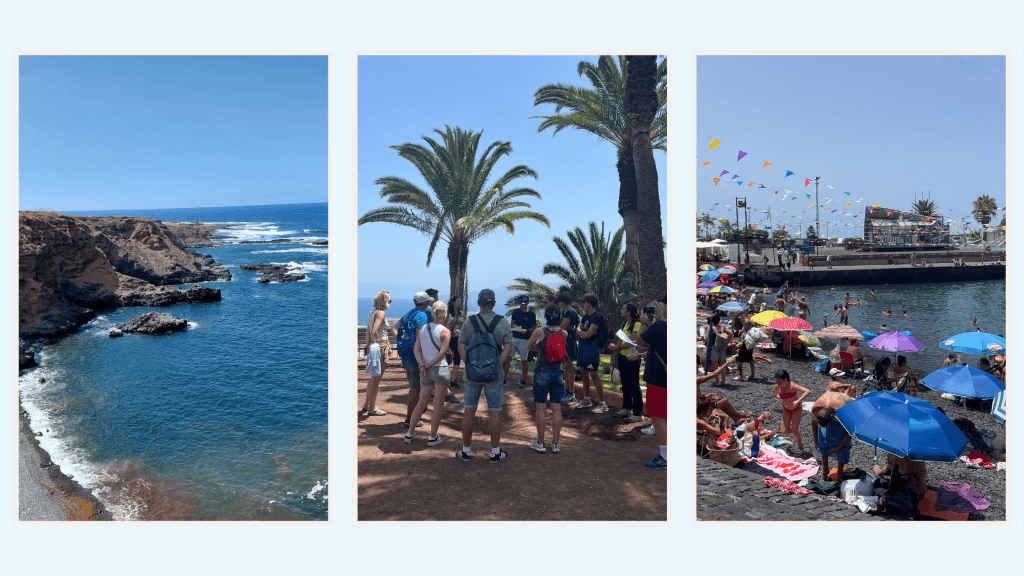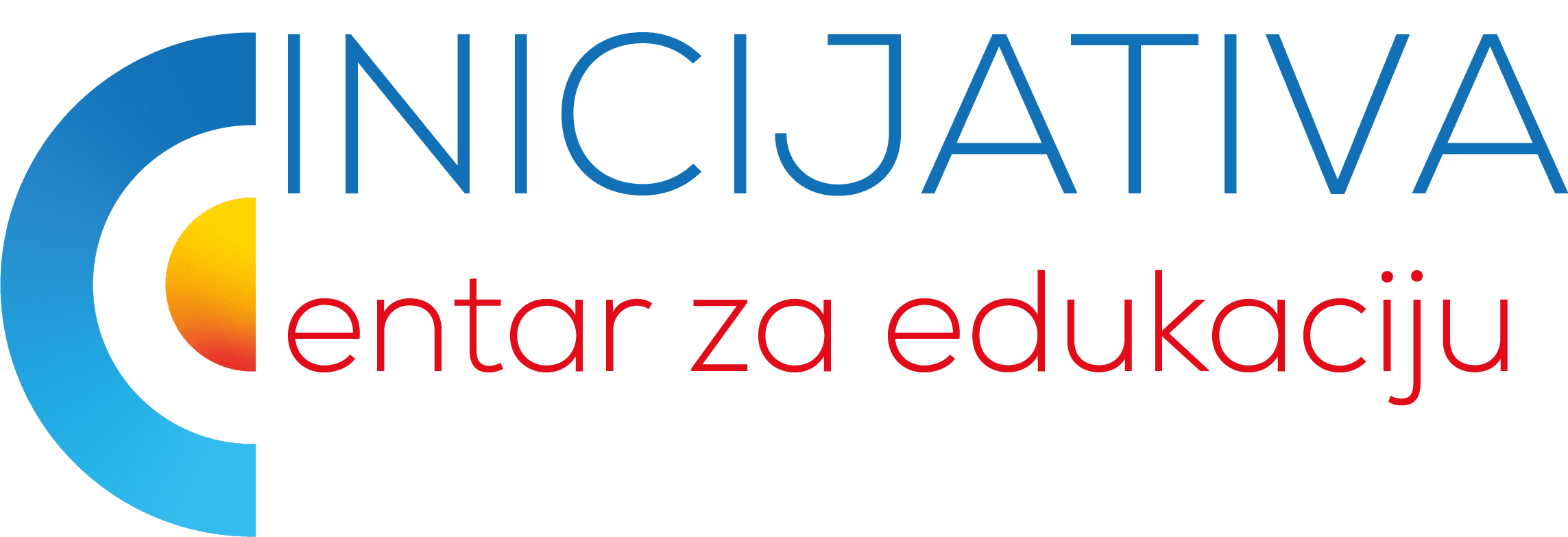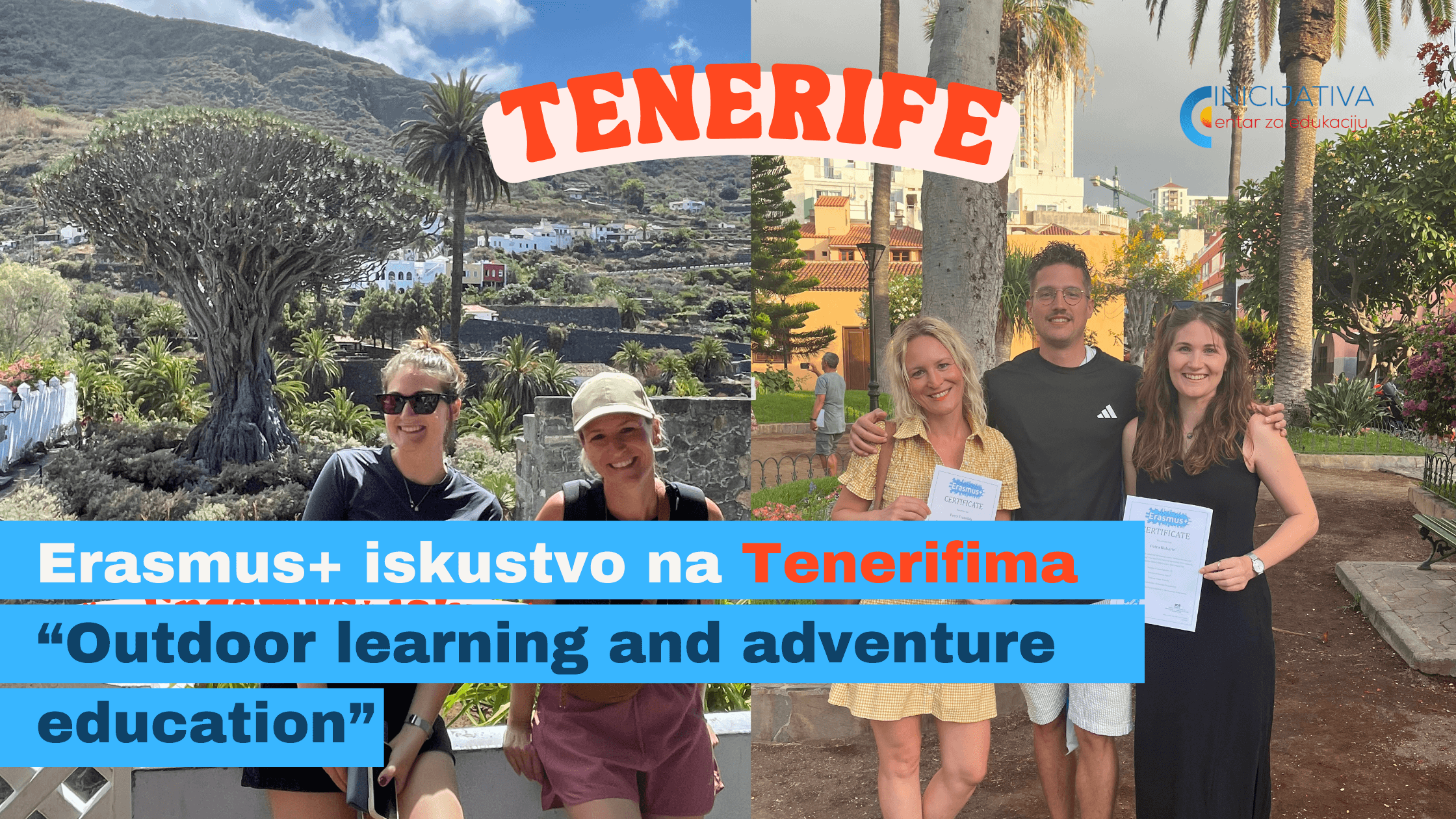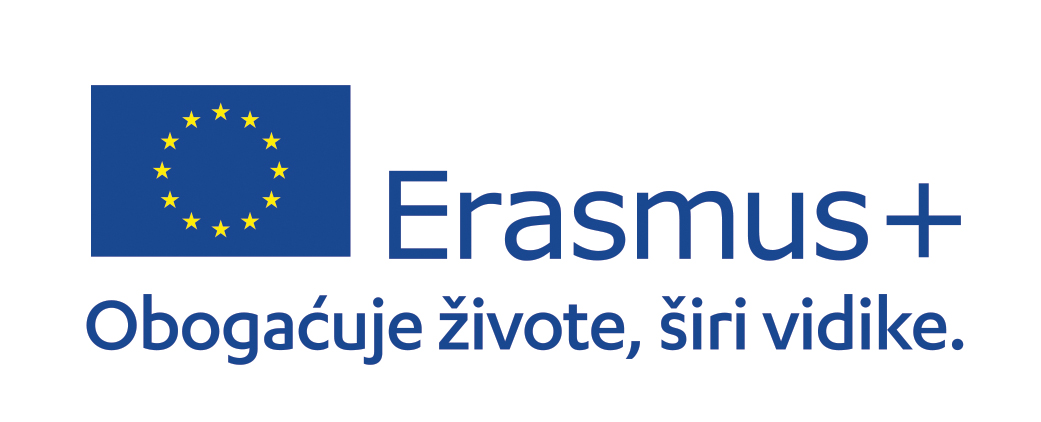Ove godine u sklopu Erasmus mobilnosti Petra T. i Petra K. iz našeg ureda posjetile su otok vječnog proljeća, plaža s crnim pijeskom, slikovitih gradova, vulkana i predivne prirode…
Pogađate li o kojem je otoku riječ?
Sedam je veličanstvenih otoka u Atlantskom oceanu… Da, to su Kanarski otoci, a mi smo bile na najvećem od njih TENERIFE.
Tenerife službeno pripada Španjolskoj iako je od sjeverozapadne obale Afrike udaljen svega 108 km. Imale smo priliku boraviti u gradu Puerto de la Cruz koji je smješten na sjevernom dijelu otoka (Kanarci govore samo o sjeveru i jugu otoka, istok i zapad se ne koriste). Grad svojim izgledom i arhitekturom otkriva svoju zanimljivu povijest od 15. st. nadalje, nakon španjolskog pokoravanja lokalnog stanovništva koje znamo pod imenom Guanči. Za razliku od gradova na jugu, sjever je smireniji i interesantniji, pa tako Puerto nudi zanimljivu arhitekturu, karakteristične drvene balkone, simpatične ulice i plaže, te poznati kompleks bazena Lago Martiánez (kojeg je projektirao poznati kanarski arhitekt César Manrique) u kojima, zaštićeni od ogromnih valova, možete bezbrižno plivati i uživati.
Pošto se mobilnost temeljila na “outdoor learning and adventure education” iskusile smo i avanturističku stranu otoka. Za one koji se usude, otok nudi bezbroj prekrasnih plaža, na kojima se možete baciti u valove. Ipak, Kanarci su nas upozorili da je bitno imati iskustva s velikim valovima i znati brzo ući i izaći iz mora. Planina Anaga je pravi raj za ljubitelje prirode i planinarenja – uistinu posebno mjesto. Na ovom području vlada specifična mikroklima koju karakterizira mnogo vlage i padalina, vjetar i oblaci. I grad La Lagunu uvijek prati promjenjivo vrijeme.
Posjetiti otok Tenerife, a ne doživjeti surovu i magičnu prirodu Nacionalnog parka Teide je neoprostivo. Teide je izuzetno popularna planinarska destinacija. NP Teide dominira planina Teide s kraterom Pico Del Teide koji nalazi na 3.718 metara nadmorske visine što ga čini najvišim vrhom Španjolske. Treći je to najviši vulkan na svijetu. Park je zbog svog specifičnog izgleda poslužio kao filmska kulisa mnogim filmovima i serijama, uključujući Star Wars.
Gradić Garachico izdignut je iz pepela nakon što ga je 1706. uništila erupcija vulkana. Vulkan eruptira svakih sto godina, te se nova erupcija očekuje u sljedećih 10. Sa svojom bogatom arhitektonskom baštinom koja datira iz 16. st., jedan je od najbolje očuvanih povijesnih i umjetničkih središta na Kanarima.
Sreća je bila na našoj strani jer smo imali prilike prošetati gradom kada su bile pripreme za proslavu Svetkovine Svetog Krista Milosrđa. Grad je bio ispunjen bojama i radošću!


_______________________________________________________________________________________
This year, as part of our Erasmus mobility, Petra T. and Petra K. from our office visited the island of eternal spring – Tenerife.
Tenerife, the largest of the Canary Islands, officially belongs to Spain but is only 108 km from the coast of Africa. We stayed in Puerto de la Cruz in the north, known for its charming streets, wooden balconies, and the famous Lago Martiánez pools designed by César Manrique. Unlike the busier south, the north is calmer, more authentic, and full of history dating back to the 15th century and the time of the Guanches.
As our mobility focused on outdoor learning and adventure education, we enjoyed exciting outdoor activities, challenged ourselves, and bonded as a group. The Anaga Mountains amazed us with their lush laurel forests, unique microclimate, and breathtaking hiking trails.
No trip to Tenerife is complete without Teide National Park, home to Spain’s highest peak (3,718 m) and the world’s third-highest volcano. Its otherworldly landscape has even been featured in Star Wars.
We also visited Garachico, rebuilt after a devastating volcanic eruption in 1706. With its 16th-century architecture and lively squares, it’s one of the best-preserved towns in the Canaries. We were lucky to be there during preparations for the Feast of the Holy Christ of Mercy, when the whole town bursts into colour and celebration.
Tenerife gave us the perfect mix of adventure, history, nature, and teamwork – an Erasmus experience we’ll never forget.




















